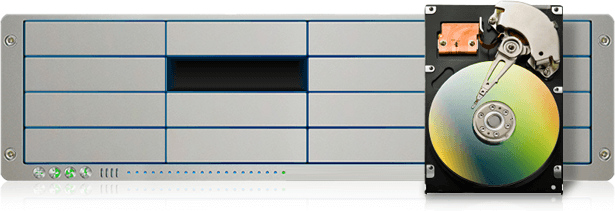TRUSTED EXPERTS
ANY DEVICE
RAID Terms Defined: Wide Striping, Storage Virtualization, Erasure Coding

RAID servers have advanced over the past several decades, and, with these advancements come a new language for users and IT professionals to understand.
Here are some common RAID server terms and their definitions. Understanding these words will help you select the best RAID drive for your application, and help 24 Hour Data to help you in the event of RAID system failure.
Wide striping – Wide striping refers to the act of spreading smaller bits of data over a large number of disk drives in a RAID array. In older arrays, Input/Output speeds would suffer because of something called the long-tail effect, where 80 percent of the disks do about 50 percent of the work. Even worse, 20 % of the work is accomplished by just three RAID groups. Wide striping spreads the work across more RAID drives, boosting performance but putting your data at greater risk in the event of a drive failure. (This is why redundancies, back-ups, and having a data recovery service you can trust are all critical with RAID servers.) This article published at Gestalt IT, a Web magazine for IT professionals, goes into more detail on the topic of wide striping.
Storage virtualization – Storage virtualization can also increase I/O speeds by taking multiple drives (as in a RAID array) and making them appear as one “virtual” entity.
Erasure Coding – Erasure coding is a process first introduced in RAID 6 arrays, designed to increase the reliability of your RAID server. Most RAID arrays up to RAID 5 rely on data parity for redundancy across multiple drives, but erasure coding helps minimize the chances of unrecoverable read errors (UREs.)
While these newer technologies have many benefits,they also make it even more important to rely on RAID Data Recovery Experts with extensive experience in RAID arrays if you do experience a mission critical RAID failure.
Start A Recovery
Get Started Below
Error: Contact form not found.
![]() WOW... fantastic customer experience! Submitted a totally dead 1TB drive for recovery yesterday now its fully recovered before noon the next day! Exceptional customer service, and impeccable reputation. Thank you 24 Hour Data, ever so much for getting my valuable data recovered and back to me. Very reasonable rates. My hat goes off to the BEST data recovery service in Dallas or in the country for that matter! You will not be disappointed using their services....
WOW... fantastic customer experience! Submitted a totally dead 1TB drive for recovery yesterday now its fully recovered before noon the next day! Exceptional customer service, and impeccable reputation. Thank you 24 Hour Data, ever so much for getting my valuable data recovered and back to me. Very reasonable rates. My hat goes off to the BEST data recovery service in Dallas or in the country for that matter! You will not be disappointed using their services....
Mark Davis
Bear Technologies











